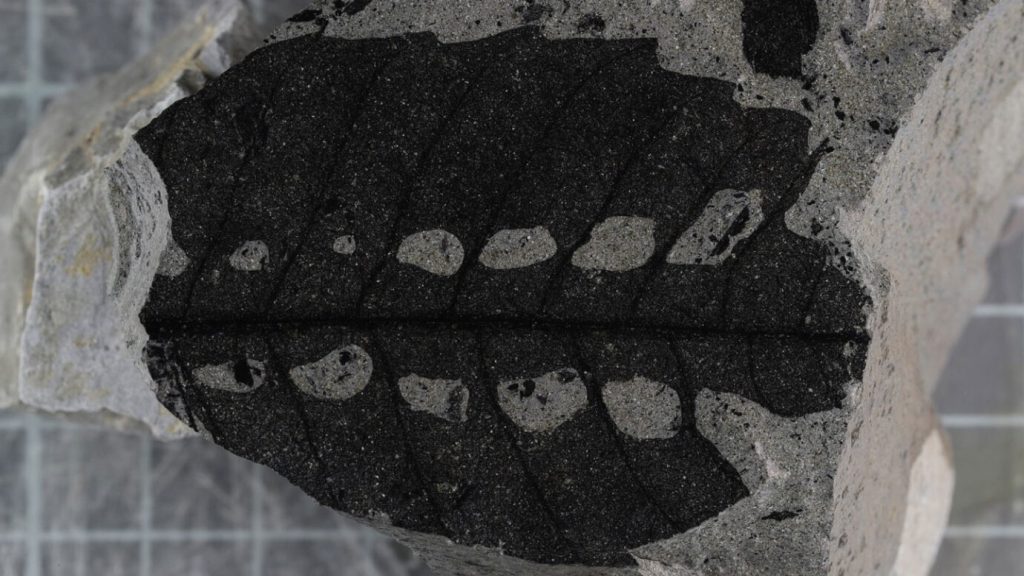Insect bites in plant fossils reveal leaves could fold shut millions of years ago

As early as 252 million years ago, some plants may have curled up their leaves at night for a cozy “sleep.”
Fossilized leaves of two now-extinct Gigantonoclea species bear signs of nyctinasty, or circadian rhythmic folding at night, researchers report February 15 in Current Biology. That would make these specimens the first known fossilized examples of this curious plant behavior, the team says.
The two leaf fossils were discovered in a rock layer in southwestern China that dates to between 259 million and 252 million years ago. In both species, the leaves were broad, with serrated edges. But most curiously, they bear oddly symmetrical holes.
Insects made those holes while feeding on the leaves while they were folded, say paleontologist Zhuo Feng of Yunnan University in Kunming, China and colleagues. Similar symmetrical patterns of insect damage in leaf fossils can be used to distinguish folding behavior from leaves that might have shriveled as the plant died, the team says.
Modern plants, including many in the legume family such as the orchid tree, that fold and unfold their leaves use specialized cells called pulvinus cells, which act somewhat like muscles (SN: 2/3/23). By shifting water from one part of the leaf to another, the cells can bloat or deflate, allowing the leaves to fold or curl.
These cells would be at the base of the leaves, which weren’t preserved in the fossils, so it’s not possible to say whether these ancient plants also had pulvinus cells, the team says. Although it’s also hard to prove this was nighttime behavior, the leaves would also have had to be folded long enough for insects to do their munching. But the find does suggest that such leaf folding emerged independently in different plant lineages: Nearly all the modern plants that do this are angiosperms, or flowering plants. But Gigantonoclea plants were gymnosperms, seed-producing plants such as conifers and ginkgos.